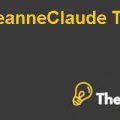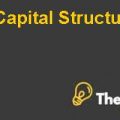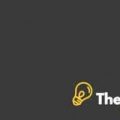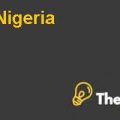
Turnover Ratios
The Turnover Ratios have several meanings according to the differing organizations. But here the turnover means the receivables, inventory and assets. Turnover means that how many in a year sales, cost of goods sold and assets will turn over with its holding terms. Now, according to the case scenario receivables and inventory turnover or in the case of Tesco because it has a less period of holding as compare to the Ahold receivables and inventory period as well as their revenue is also high. This coverage period is key to the success for any organization. Mary should focus on this criteria and Asset turnover means that how many sales cover the period of the assets in which also Tesco have an advantage.
Liquidity Ratios
Liquidity ratios describe the financial health of the company in respect to pay off all liabilities through current assets. Current ratio shows the current ability of company to setoff current liabilities. It also covers acid test ratio and operating cash ratio. These ratios are used to acknowledge the different criteria of the business. In the relevant case scenario Tesco has a competitive edge in all the liquidity ratios in comparison to the Ahold ratios. At average Tesco have a current ratio of 0.71:1. On the other hand Ahold has an average of 0.36:1 which is an alarming condition in terms of financial viability. Hence the liquidity ratios cover the short term ability of company to pay off short term debts.
DuPont Analysis
DuPont analysis is the method of evaluating the performance of the enterprise with multiple ends of the investment as well as the equity side. This method measured the assets on the gross value of book worth in order to produce large returns on the investment or equity. This is basically reflecting the DuPont Identity with various ends. DuPont analysis covers the return on equity with all the aspects of the balance sheet and income statements. It basically deals in three criteria of the organization which will gear an organization up. These three basic criterions are as follows:
- Functional competence, which measured the profit ratios with respect to sales
- Asset usage competence, which measured with asset turnover
- Geared of Finance, which measured with capital multiplier
It is thought that evaluating the assets on gross book values, neglects the benefits arising from the new purchased. This avoidance occurs in the financial accounting that is expressed in depreciation methods. Such avoidance abates the profit margins in contrast to net income or over the investment on equity. Return on equity is always showing some un-satisfied with the occurrence of depreciation. For resolving these criteria DuPont gives the right picture of the return, according to the investments.
Desegregation of ROE
Desegregation of return on equity with respect to the said analysis is discussed with few Points in this report. This is basically decomposition of return in many ways which are exhibited in an excel sheet attached. It shows that they have two way decomposition which net margin multiple with return on equity, three ways decomposition which is very common net margins multiple with asset turnover then after multiple with equity multiplier. Equity multiplier means that total assets with respect to total equity comparison. There is also a four way decomposition which is also addressed in the excel file that is operating profit margin * asset turnover - interest expense rate * equity multiplier * tax retention. It depends on the company nature what should they opt. In the case scenario three way approach is good for evaluating the equity performance
Operating versus Non-Operating Components
The portion of the enterprise component derived from the activities which are not related to its business operations. Non-operating components includes such items with known as a dividend, gain and loss from investments, currency gain/loss, other income, assets gain and loss and comprehensive income. These are the main differences of operating versus non-operating components. Mary also has to evaluate these components which are essential for the development of the organization
Diagram Discussion
The diagram is shown in the excel file which depicts and describe about the relationship between the elements of DuPont analysis and showing the right criteria for evaluating the returns. It analyzes assets with the back end of Current assets and noncurrent assets with respect to the assets and generate the asset turnover. On the other side of the diagram illustrates that Earnings before Interest and Tax (EBIT) with the supports of operating income minus operating expense. EBIT compares with operating Profit which evaluates the net margin of the company. Afterwards, both circumstances of asset turnover and net margins evaluate DuPont analysis....................................
This is just a sample partial case solution. Please place the order on the website to order your own originally done case solution.












